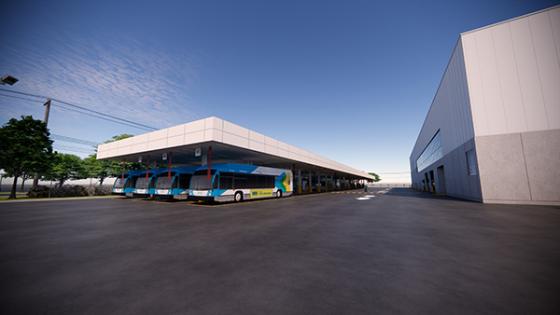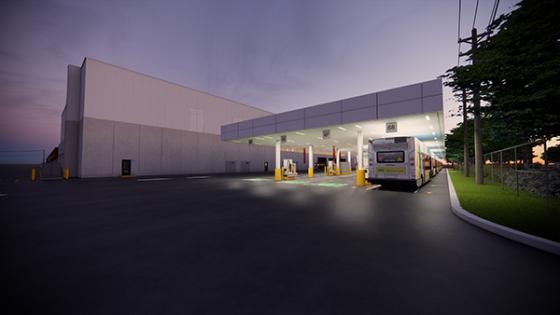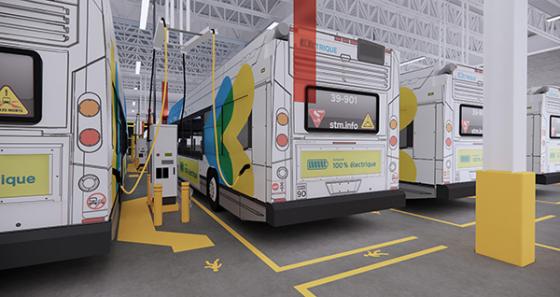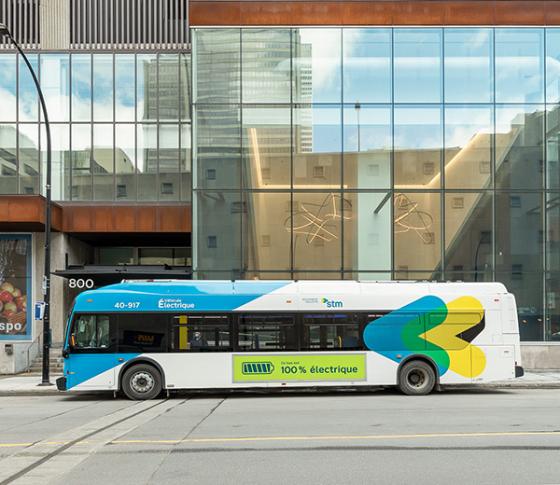On the road to electrification
In 2010, we became the first major transit agency in North America - and one of the first in the world - to commit to electrifying our bus fleet starting in 2025.
After several years of experimentation, we’re closer than ever to fulfilling that commitment, and our excitement is electric!
Come with us on our journey to bus network electrification.
2010: We commit to acquiring only electric buses by 2025
Since 2014: We conduct studies and pilot projects to benefit from the latest technological advances
2016: We deploy 200 hybrid buses across the network
2017: We commission the first three fast-charging electric buses
2019: We commission the first long-range (slow-charging) electric buses
2021:
- Bus line 36 Monk becomes the first transit line in Canada served entirely by electric buses
- We upgrade the Stinson bus garage so that it can service and charge electric buses
2022: We add 30 long-range electric buses to our network
2023: We begin preparing our bus garages for the next fleet of electric buses, which we’ll receive starting in 2025
2024: In January and February, we test a Pre-Series bus, a 40-foot prototype, with no passengers on board, to make sure it meets our needs

A solid plan
We’ve been working hard to prepare our bus network for the addition of 46 new electric buses in 2025 and a further 140 in 2026.
That means adapting our bus garages, identifying and acquiring charging solutions, rethinking bus management in our garages, rethinking vehicle distribution, modernizing maintenance, transforming job positions, and training our teams to develop new skills.
Our bus garages
We’re phasing in electric infrastructure at three bus garages.
- 2025: Legendre and Anjou bus garages partially electrified
- Fun fact: At Anjou, the buses will be kept outside. This choice was inspired by the positive experiences observed in other parts of the world, including the Nordic countries. The garage’s industrial location makes it an ideal candidate for this new approach.
- There will be a shelter to protect the buses and chargers from the elements. It’s just one of the many ways we’re innovating to adapt new approaches to our needs.


Shelter at the Anjou bus garage. Images and design by the STM Infrastructure Engineering Team. Concept images. For illustrative purposes only.
- 2026: Saint-Laurent bus garage adapted and Anjou bus garage interior setup begins.
We chose these three garages because they could be electrified without any major expansion work.


Legendre bus garage. Images and design by the STM Infrastructure Engineering Team. Concept images. For illustrative purposes only.
Why are we going electric in phases?
- To avoid disrupting service delivery to our customers.
- Technologies are constantly changing, so we keep up with new developments, test them, and make the best choices for the future.
Charging technology
- Charger plugs were found to be the best option to electrify our facilities as quickly as possible.
- Adding chargers means we’ll lose space in our bus garages. Storing buses outdoors at Anjou will help compensate for this loss.
Computer technologies
Electrification will make managing our operations more complex. Fortunately, we’re using technology to automate many aspects of service delivery, maintenance, refuelling, charging, and mileage management.
We chose innovative computer technologies to help us manage our electricity consumption, so that we can use this increasingly in‑demand resource as efficiently as possible.
Our teams
Electrification isn’t just about buying buses—it’s about transforming our entire business.
- Rethinking and modernizing most of our processes to work with an electric fleet
- Looking ahead to train our staff in the electrification-related skills they’ll need in the future
Our teams are ready and committed to making this important societal and environmental transition a success.
Learn more about electric buses

